Key Mechanisms and Benefits of Quick Freezing
Quick freezing refers to the method of rapidly freezing food by quickly passing it through its ice crystal formation zone, where the core temperature rapidly reaches -18°C. During the freezing process, food undergoes various changes, such as physical changes (volume, thermal conductivity, specific heat, and moisture loss), chemical changes (protein denaturation, color changes), cellular structure changes, as well as biological and microbial changes. The key feature of quick freezing is that it maximizes the retention of the food’s original nutritional value, color, flavor, and taste. In other words, it is essential to ensure that the various changes occurring in the food during the freezing process are kept reversible.
Critical Benefits of Quick Freezing in Food Quality and Preservation
Avoids the Formation of Large Ice Crystals: Prevents the formation of large ice crystals between cells, which can damage the food’s texture.
Reduces Moisture Loss During Thawing: Minimizes the extraction of water from within the cells, resulting in less juice loss when the food is thawed.
Minimizes Concentration Damage: The time for concentrated solutes and food tissues, colloids, and various components to interact within the cellular structure is significantly shortened, reducing the harmful effects of concentration to the lowest level.
Inhibits Microbial Growth: Quickly lowering the food temperature below the level where microbial growth occurs helps to effectively inhibit the growth of microorganisms and their biochemical reactions.
Enhances Equipment Efficiency: The shorter the freezing time in the freezing equipment, the better the equipment utilization and the more continuous the production. Most foods begin to freeze when the temperature drops to -1°C, with the majority of ice crystals forming between -1°C and -5°C. This phase is known as the ice crystal formation stage. Quick freezing significantly shortens the freezing time during this stage, rapidly removing heat and improving the quality of frozen food.
Advantages of Tunnel Quick Freezer
The tunnel freezer is a relatively simple yet highly efficient freezing device. Depending on the type of conveyor belt used, it can be classified into tunnel mesh belt freezers and tunnel plate belt freezers. It is mainly suitable for the quick-freezing of seafood, poultry, vegetables, fruits, pastries, dairy products, and other food items, with a freezing capacity ranging from 100 kg/h to 1000 kg/h.
Certainly! Here’s the English translation:
Efficient Freezing:The tunnel freezer utilizes a continuous production line design, enabling the rapid freezing of large quantities of food in a short period, significantly boosting production efficiency and making it ideal for large-scale production needs.
Uniform Freezing: Through the use of powerful cold air circulation, the tunnel freezer ensures that food is quickly and evenly cooled from the outside in, reducing ice crystal formation and preserving the texture and quality of the food.
Energy-Saving Design: Tunnel freezers are typically equipped with high-efficiency refrigeration systems and quality insulation materials, ensuring efficient freezing while minimizing energy consumption and reducing operating costs.
Continuous Production Capability: The tunnel freezer system supports uninterrupted continuous production, reducing the waiting time between batches and improving the overall efficiency of the production line, particularly suited for food processing plants that require continuous high-efficiency operations.
Flexible Configuration: The tunnel freezer can adjust freezing parameters such as temperature and air velocity according to the needs of different foods, providing flexibility to handle a wide range of freezing requirements and enhancing production adaptability.
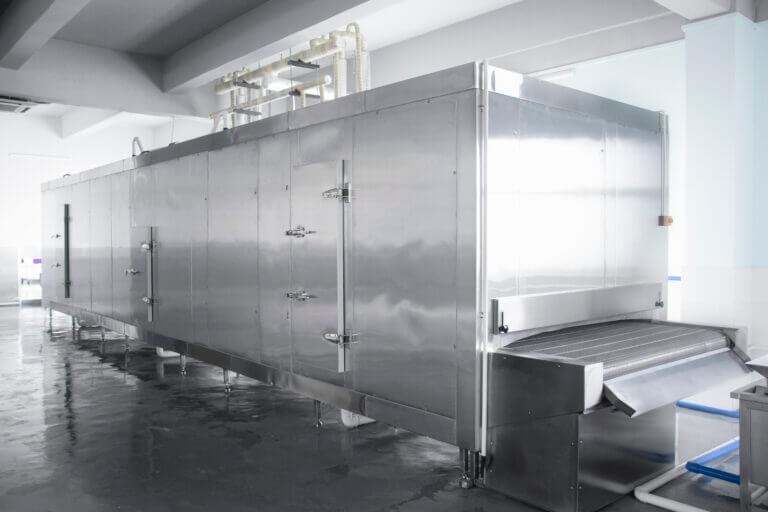
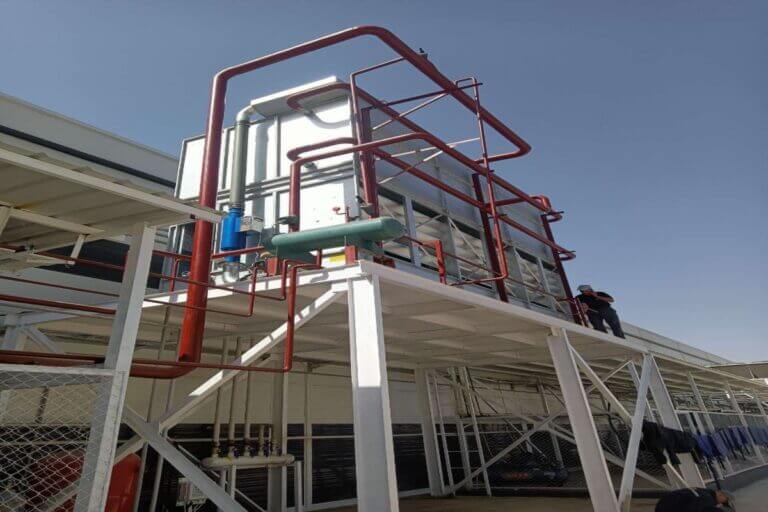
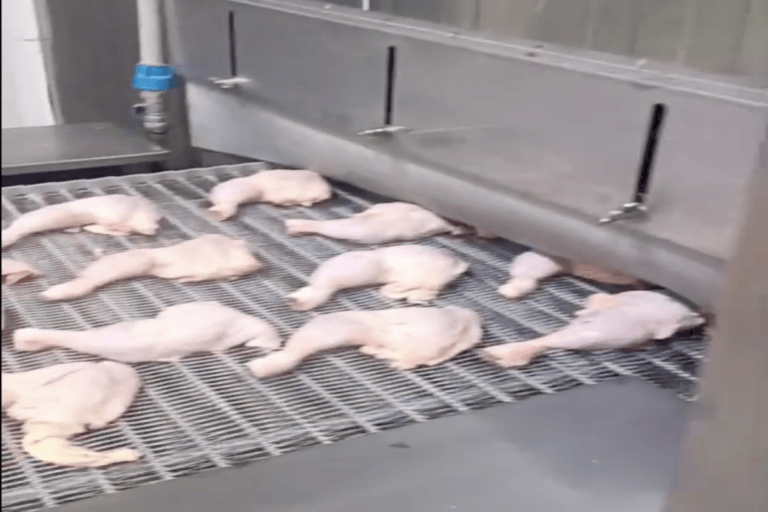
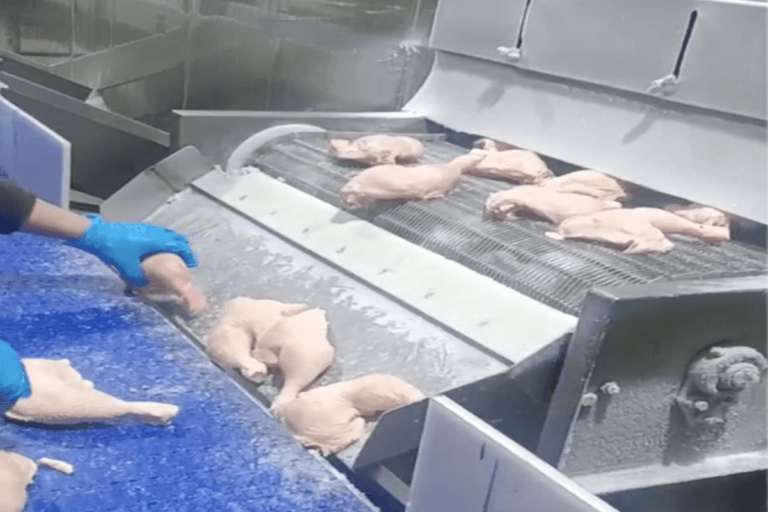
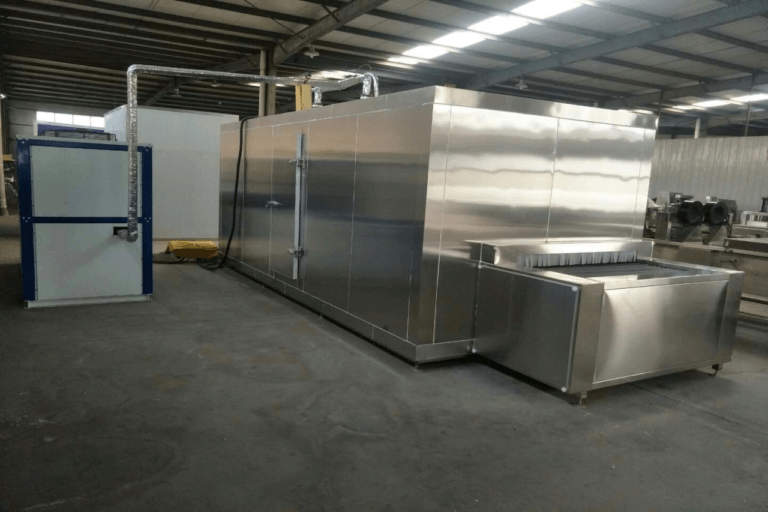
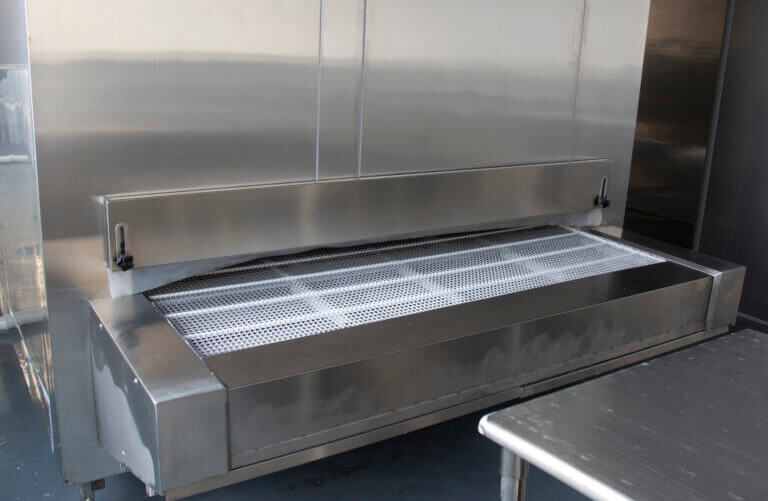
Structural Features of Tunnel Quick Freezer
Here’s the content consolidated into five key points:
1. Simple Structure and Long Service Life: The tunnel freezer is designed with a straightforward structure, ensuring ease of operation and a long service life.
2. High-Strength SUS304 Mesh (Plate) Belt: Equipped with a high-strength SUS304 stainless steel mesh (or plate) belt, the freezer offers a smooth surface for conveying frozen products, with customizable belt widths based on specific needs.
3. Efficient Freezing with Thermal Fluctuation Airflow: The freezer enhances freezing efficiency through a thermal fluctuation airflow system, ensuring rapid and consistent freezing.
4. Flexible Belt Configurations and Speed Control: Depending on production needs, the freezer can be configured with single or double belts. An imported inverter provides stepless speed control, allowing for continuous adjustment of freezing time to suit various products.
5. Hygienic Design with High-Quality Insulation: The unit features a water defrosting system for cleanliness, and is constructed with rigid polyurethane foam for excellent insulation. The stainless steel cladding and framework ensure easy cleaning and compliance with HACCP food hygiene standards.
Configurations of Tunnel Quick Freezer
| Number | Quick Freezing Capacity (KG/H) | Compressor Refrigeration Capacity (KW) | Tunne Size (m) | |
| 1 | 100 | 16 | 6×1.5×2.1 | |
| 2 | 150 | 23 | 6.8×1.8×2.2 | |
| 3 | 300 | 45 | 10×2.3×2.4 | |
| 4 | 500 | 77 | 10×3×2.4 | |
| 5 | 1000 | 155 | 17.1×3.5×2.3 | |
| 6 | 1500 | 228 | 25×3.5×2.3 |
Taking dumplings as an example, the incoming temperature is 15℃, the shipping center temperature is -18℃, and the warehouse temperature is -35℃;
In addition to the above standard models, they can be customized according to customer special requirements
Frequently Ask Questions
A tunnel freezer is a type of equipment used for large-scale food processing that rapidly freezes products by conveying them through a low-temperature tunnel on a continuous conveyor belt.
Tunnel freezers are suitable for a wide range of foods, including seafood, poultry, vegetables, fruits, pastries, dairy products, and more.
Tunnel freezers offer higher freezing efficiency and uniformity, making them ideal for continuous, large-scale production. They also have significant advantages in energy efficiency and production output compared to other freezing equipment.
While the initial investment in a tunnel freezer may be higher, the use of high-efficiency refrigeration systems and quality insulation materials results in lower overall operating costs over time due to energy savings.
Choosing the right tunnel freezer model depends on factors such as your production scale, the types of food to be frozen, and the required freezing capacity. It is advisable to consult with suppliers to assess your specific needs.
Tunnel freezers are designed with ease of maintenance and cleaning in mind, often featuring a water defrosting system and stainless steel construction, which ensures hygiene and extends the equipment's lifespan.
The conveyor belt in a tunnel freezer is typically made of high-strength SUS304 stainless steel mesh or plate, known for its durability, corrosion resistance, and smooth surface suitable for food processing.
Tunnel freezers often feature defrosting systems such as hot gas or water defrosting to prevent ice build-up on the evaporator coils. These systems help maintain efficient airflow and consistent freezing performance by periodically melting the ice that forms during operation.
Yes, tunnel freezers are equipped with imported inverters that allow for stepless speed control, enabling continuous adjustment of freezing time to accommodate different types of frozen products.
Tunnel freezers are constructed using stainless steel materials that meet food hygiene HACCP standards, ensuring the safety and quality of the processed products.
Let's Talk About Your Tunnel Quick Freezer Requests
Pls tell us which country will you use the machine. What kind of products you want to freeze and what’s the daily capacity per batch you need. With those information, we will quickly respond with detailed solutions and quotes. Act Now!
